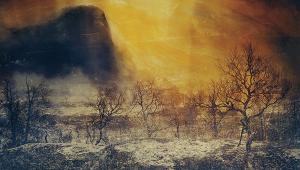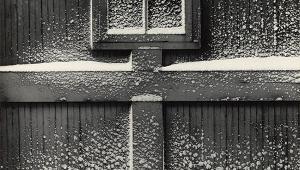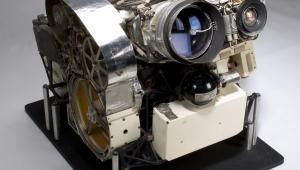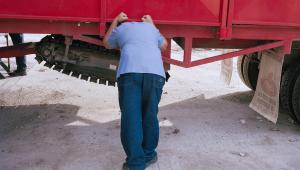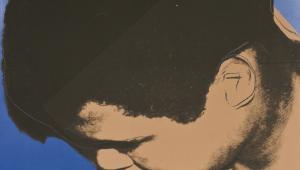Shows We’ve Seen: Charles Marville: Photographer Of Paris: History Captured By The Camera
Charles Marville: Photographer of Paris, on view at New York’s Metropolitan Museum of Art through May 4, 2014, features nearly 100 photographs and marks the first American retrospective of this Parisian-born (1813-1879) member of photography’s very first generation. Marville’s photographs are remarkable as images and also provide invaluable documentation of the transformation of Paris from a medieval city to the world capital we know today. The show is highly recommended for photographers, students of history, and everyone who loves the “City of Light.”

Marché aux chevaux (Horse Market)
(fifth arrondissement), c. 1867
albumen print from collodion negative
image: 26.2 36.8 cm (10 5/16 14 1/2 in.)
The J. Paul Getty Museum, Los Angeles
Marville’s work stands in contrast to the most flamboyant personality of photography’s early days, Nadar, another Parisian who was the first photographer to make aerial images from a balloon and who was a renowned portraitist of the luminaries of France—the world’s first celebrity photographer. Marville’s interests led him to quieter subjects, principally architecture and landscapes.
Success often being a combination of preparation and luck, Marville enjoyed both. His luck lay in timing; just as he turned from his early career as an illustrator and painter to the new medium of photography, France entered the Second Empire (1852-1870), and Emperor Napoleon III assigned the infamous Baron Haussmann to initiate a sweeping renovation of Paris. Haussmann destroyed thousands of buildings (including his own birthplace) to create the modern plan of wide boulevards, spacious parks, and public works that we still enjoy today. Marville recorded Haussmann’s slash-and-burn approach to city planning, and in 1862 he was named the official photographer of Paris.

Self-Portrait at a Window, February 20, 1851
salted paper print from paper negative
image: 14.29 11.4 cm (5 5/8 4 1/2 in.)
Musée d’Orsay, Paris
Marville’s preparation lay in his training as an illustrator. He understood that flat two-dimensional images, be they paintings or photographs, need to present the viewer with a sense of depth to successfully capture the world’s three dimensions. His photograph of the Paris Horse Market (Marché aux chevaux) pulls the viewer’s eye down a cobbled roadway toward a vanishing point just to the right of the image’s center, a technique perfected by Renaissance artists centuries before. Marville frames the vista with thick stone walls on both sides. The stationary figure on the left side leans against a small building in his winter coat and hat. He appears to be watching Marville at work, not surprising because photographers were a rarity in those days.
Marville used two techniques in his career. Although Louis-Jacques-Mandé Daguerre had declared the “invention” of photography in Paris in 1839 using mercury fumes to create an image exposed on a sensitized copper plate, Marville was able to produce multiple prints of his work because he made negatives with his camera rather than the one-of-a-kind small images formed by the Daguerreotype process.

Rue de Constantine (fourth arrondissement), 1866
albumen print from collodion negative
image: 27.3 x 36.8 cm (10 3/4 x 14 1/2 in.)
Lent by The Metropolitan Museum of Art, The Horace W. Goldsmith Foundation Fund, through Joyce and Robert Menschel, 1986
Image © The Metropolitan Museum of Art
In his earliest work, he made salted paper prints, using a technique developed by the Englishman Henry Fox Talbot (who also claimed to be photography’s inventor). Talbot’s method involved exposing paper coated with light-sensitive silver salts to produce a negative image. After processing, a positive print was created by placing the negative in contact with another sensitized sheet of salted paper and shining light through the paper negative. This was the first negative-to-positive process, the method that would define photography right up to the digital age.
Marville’s early self-portrait shows the warm tones and soft focus of the salted paper negative to paper print process. Here, Marville has propped himself against the frame of a window, bathing his upper body in direct sunlight and bracing himself so he will appear sharp in the image. The soft focus and blocked highlights are the result of the translucent quality of the paper negative. In today’s era of the “selfie,” self-portrait subjects tend to look directly into the lens, but Marville posed himself to create a profile view, an approach that was common in painted portraits of the day.
Marville soon turned to the collodion wet plate process. A glass sheet was coated with a silver-based emulsion and quickly exposed in the camera. The glass negative yielded a sharper image, and paper coated with silver salts held by albumen (egg white) provided a wider tonal range for photographers than the salted paper prints.

Haut de la rue Champlain (vue prise à droit)
(Top of the rue Champlain) (View to the Right)
(twentieth arrondissement), 1877-1878
albumen print from collodion negative
image: 26 x 36.6 cm (10 1/4 x 14 7/16 in.)
Musée Carnavalet, Paris
© Charles Marville / Musée Carnavalet / Roger-Viollet
One of Marville’s best known photographs is Rue de Constantine (fourth arrondissement) taken from an elevated position equivalent to the second floor of the buildings that flank the wet, cobblestone street that is under repair in four spots. Burly workmen stand in the street. In the front right corner, a female vendor tends her cart; a man stands in a doorway across a narrow alley from the vendor. Several heads are blurred because they moved during the long exposure. There were probably people walking along Rue de Constantine that disappeared altogether because of the long exposure time required.
The large building at the end of the street is the Palais de Justice, which had just been completed. All the other buildings we see were destroyed under Haussmann’s plan. Today’s Rue de Constantine is on the other side of the Seine. This street we see here was widened and is now the rue de Lutece on the Ile Saint-Louis.
This captivating show contains photographs from French and American collections and was curated by Sarah Kennel of the National Gallery of Art, where it was first presented. A comprehensive catalog is available from the National Gallery (www.nga.gov).

